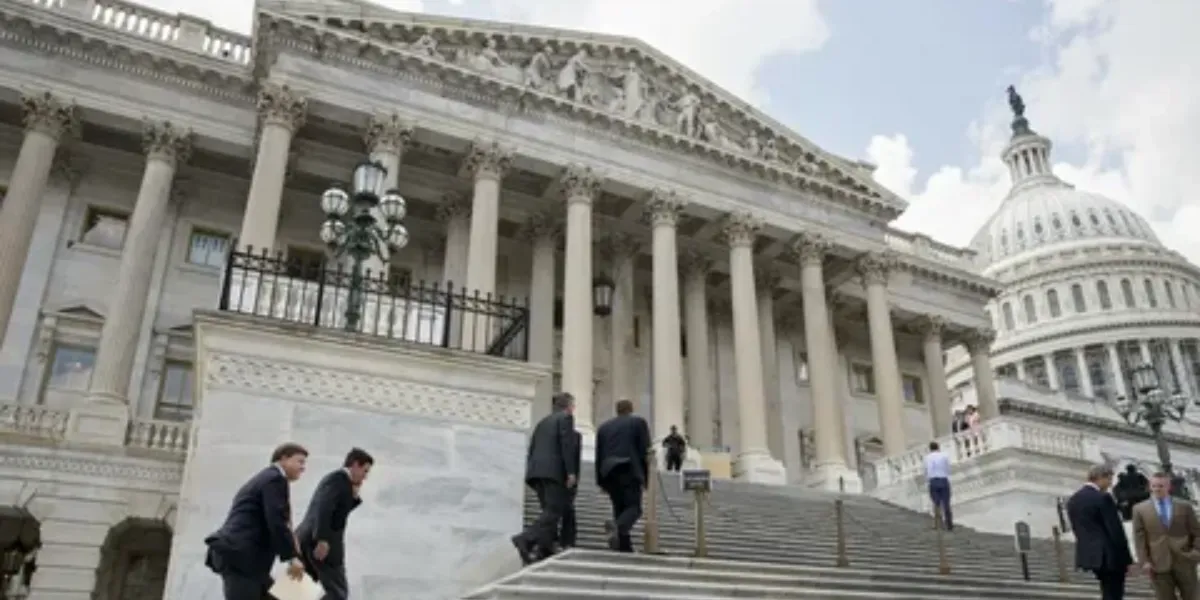Understanding the Landscape
The heading “Introduction to Lobbying: Understanding the Landscape” sets the stage for the section of a report that aims to provide foundational knowledge and context about lobbying. Here’s an explanation of each part of the heading:
Lobbying: This signals that the section will begin with an introductory overview of what lobbying is. It will define lobbying in the context of government relations and advocacy efforts. This might include explanations of who engages in lobbying, why lobbying occurs, and its importance in various sectors.
Understanding the Landscape: This phrase suggests that the report will explore the broader context or environment in which lobbying operates. It implies a survey or examination of the current state of lobbying activities, both nationally and potentially internationally. This could encompass the legal framework governing lobbying, the different types of lobbyists (e.g., corporate, nonprofit, professional), and the various methods and strategies used in lobbying efforts.
In summary, “Introduction to Lobbying: Understanding the Landscape” serves as an introductory section that aims to provide readers with a comprehensive understanding of lobbying as a practice, its role in influencing public policy, and the diverse elements that shape the lobbying environment.
Evolution of Lobbying Practices: Historical Overview

The heading “Evolution of Lobbying Practices: Historical Overview” suggests that this section of the report will delve into the historical development and changes in lobbying practices over time. Here’s a breakdown of what each part of the heading implies:
Evolution of Lobbying Practices: This indicates that the focus will be on how lobbying methods, strategies, and norms have changed and evolved throughout history. It suggests an exploration of how lobbying has adapted to socio-political changes, technological advancements, and shifts in public perception.
Historical Overview: This phrase specifies that the section will provide a chronological narrative or analysis of lobbying practices from their origins to the present day. It implies a retrospective examination of key milestones, significant events, and influential figures that have shaped the development of lobbying as a practice.
In essence, “Evolution of Lobbying Practices: Historical Overview” serves as a section title that invites readers to explore the historical trajectory of lobbying, offering insights into its evolution, adaptation to changing contexts, and the factors that have influenced its development over time.
Regulatory Framework: Impact on Lobbying Activities
The heading “Regulatory Framework: Impact on Lobbying Activities” suggests that this section of the report will focus on the legal and regulatory environment surrounding lobbying and how these regulations influence lobbying activities. Here’s a breakdown of what each part of the heading implies:
Regulatory Framework: This indicates that the section will discuss the laws, rules, and regulations that govern lobbying activities. It suggests an examination of both the national and potentially international legal frameworks that define what lobbying is, who can engage in it, disclosure requirements, ethics standards, and any restrictions or limitations placed on lobbying efforts.
Impact on Lobbying Activities: This phrase specifies that the section will explore how these regulatory measures affect lobbying practices and outcomes. It implies an analysis of how regulations shape the strategies, tactics, and effectiveness of lobbying campaigns. This could include discussions on compliance challenges, legal risks, transparency implications, and the overall influence of regulatory policies on the lobbying landscape.
In summary, “Regulatory Framework: Impact on Lobbying Activities” serves as a section title that aims to provide readers with an understanding of how regulatory frameworks shape the practice and outcomes of lobbying, offering insights into the legal context within which lobbying operates and its implications for stakeholders involved in lobbying activities.
Key Players in Lobbying: Corporations, NGOs, and Government Bodies

The heading “Key Players in Lobbying: Corporations, NGOs, and Government Bodies” indicates that this section of the report will focus on the primary entities or stakeholders involved in lobbying efforts. Here’s an explanation of each part of the heading:
Key Players in Lobbying: This suggests that the section will identify and discuss the main actors or entities that engage in lobbying activities. It implies an exploration of who participates in lobbying and why they do so. This could encompass various types of organizations, individuals, or groups that seek to influence public policy decisions through lobbying efforts.
Corporations, NGOs, and Government Bodies: This phrase specifies the categories of key players that will be examined within the context of lobbying.
Corporations: This refers to businesses and corporate entities that engage in lobbying to promote their interests, influence regulatory decisions, or shape public policy in their favor.
NGOs (Non-Governmental Organizations): This includes non-profit organizations, advocacy groups, and civil society organizations that lobby to advance social causes, promote specific issues, or advocate for policy changes aligned with their missions.
Government Bodies: This refers to governmental entities themselves, including elected officials, government agencies, and departments, which may engage in lobbying activities to advocate for policies that align with their objectives or to respond to lobbying efforts directed towards them.
In summary, “Key Players in Lobbying: Corporations, NGOs, and Government Bodies” serves as a section title that highlights the diverse range of stakeholders involved in lobbying activities, offering insights into their roles, motivations, and impacts on the lobbying process and outcomes.
Trends in Lobbying Strategies: Digitalization and Data Analytics

The heading “Trends in Lobbying Strategies: Digitalization and Data Analytics” suggests that this section of the report will focus on the modern trends and advancements in lobbying techniques, particularly how digital technologies and data analytics are shaping these strategies. Here’s a breakdown of what each part of the heading implies:
Trends in Lobbying Strategies: This indicates that the section will discuss current and emerging trends in how lobbying is conducted. It suggests an exploration of new approaches, methods, and tactics that have gained prominence in recent years. This could include shifts in communication methods, coalition-building strategies, grassroots mobilization efforts, and more.
Digitalization and Data Analytics: This phrase specifies the specific trends being highlighted in the section.
Digitalization: Refers to the increasing use of digital technologies such as social media, online platforms, email campaigns, and digital advocacy tools in lobbying efforts. It implies a discussion of how digital channels are used to reach and mobilize stakeholders, influence public opinion, and engage with policymakers.
Data Analytics: Refers to the use of data-driven insights and analytics techniques to inform lobbying strategies and decision-making. This includes the analysis of public opinion data, stakeholder engagement metrics, regulatory trends, and other relevant data points to optimize lobbying campaigns and enhance effectiveness.
In summary, “Trends in Lobbying Strategies: Digitalization and Data Analytics” serves as a section title that explores the evolving landscape of lobbying strategies, with a focus on how digital technologies and data-driven approaches are transforming the practice. It aims to provide insights into the adoption of new tools and methods that lobbyists and advocacy groups are utilizing to navigate and influence political and regulatory environments more effectively.
Case Studies: Successful Lobbying Campaigns
The heading “Case Studies: Successful Lobbying Campaigns” indicates that this section of the report will feature detailed examinations of specific instances where lobbying efforts have achieved notable success. Here’s an explanation of each part of the heading:
Case Studies: This suggests that the section will present detailed analyses or narratives of individual cases or examples. In this context, it refers to specific lobbying campaigns that have been selected for their effectiveness or impact. Case studies are typically used to provide in-depth insights into real-world examples, offering a detailed examination of the strategies, tactics, challenges, and outcomes of each case.
Successful Lobbying Campaigns: This phrase specifies the focus of the case studies. It indicates that the section will highlight lobbying efforts that have achieved positive outcomes or successfully influenced policy decisions, regulations, or public opinion in favor of the lobbying entity’s objectives. Success in lobbying campaigns can be measured in various ways, such as legislative changes, regulatory approvals, public perception shifts, or other tangible impacts.
In summary, “Case Studies: Successful Lobbying Campaigns” serves as a section title that aims to provide readers with illustrative examples of effective lobbying strategies and their outcomes. It offers insights into the factors contributing to lobbying success and serves as a practical learning tool for understanding how different tactics and approaches can be applied in lobbying efforts to achieve desired goals.
Ethical Considerations in Lobbying: Transparency and Accountability

The heading “Ethical Considerations in Lobbying: Transparency and Accountability” suggests that this section of the report will focus on the ethical dimensions of lobbying practices, particularly emphasizing transparency and accountability. Here’s an explanation of each part of the heading:
Ethical Considerations in Lobbying: This indicates that the section will explore the ethical issues and principles that arise in the context of lobbying activities. It suggests an examination of the moral implications, standards of conduct, and ethical frameworks that should guide lobbyists, lobbying organizations, and policymakers in their interactions and engagements.
Transparency and Accountability: This phrase specifies the specific ethical principles being highlighted in the section.
Transparency: Refers to the openness and clarity with which lobbying activities are conducted and disclosed. It implies a discussion of the importance of transparency in lobbying, including the disclosure of financial contributions, lobbying expenditures, meetings with public officials, and other relevant information to ensure public awareness and accountability.
Accountability: Refers to the responsibility and answerability of lobbyists and lobbying organizations for their actions and impacts. It implies a discussion of mechanisms for holding lobbyists accountable for their conduct, adherence to ethical standards, and the consequences of unethical behavior in lobbying practices.
In summary, “Ethical Considerations in Lobbying: Transparency and Accountability” serves as a section title that examines the ethical dimensions of lobbying, with a focus on promoting transparency in lobbying activities and ensuring accountability for ethical conduct. It aims to highlight the importance of ethical guidelines and practices in maintaining public trust, integrity, and fairness in the lobbying process.
Global Perspectives: Comparative Analysis of Lobbying Regulations

The heading “Global Perspectives: Comparative Analysis of Lobbying Regulations” suggests that this section of the report will provide an in-depth examination and comparison of lobbying regulations across different countries or regions worldwide. Here’s an explanation of each part of the heading:
Global Perspectives: This indicates that the section will take a broad, international approach to the topic. It suggests that the report will not focus solely on one country or region but will instead explore how lobbying regulations vary and are implemented globally. This could include discussions on cultural, legal, political, and economic factors that influence lobbying regulations in different parts of the world.
Comparative Analysis of Lobbying Regulations: This phrase specifies the focus of the section.
Comparative Analysis: Refers to the examination and comparison of lobbying regulations across multiple jurisdictions. It implies a systematic evaluation of similarities, differences, strengths, and weaknesses in how different countries or regions regulate lobbying activities. This could include comparisons of legal frameworks, disclosure requirements, enforcement mechanisms, transparency standards, and the effectiveness of regulatory measures.
Lobbying Regulations: Refers to the laws, rules, and guidelines that govern lobbying activities within each jurisdiction. It implies a discussion of the legislative and regulatory approaches taken by governments to oversee lobbying practices, ensure transparency, prevent conflicts of interest, and promote ethical conduct.
In summary, “Global Perspectives: Comparative Analysis of Lobbying Regulations” serves as a section title that aims to provide readers with a comprehensive understanding of how lobbying is regulated and managed across various countries or regions worldwide. It offers insights into the diverse approaches and practices in lobbying regulation, highlighting both challenges and best practices that can inform policymakers, stakeholders, and researchers interested in global lobbying trends and governance.
Future Outlook: Emerging Trends and Technologies in Lobbying
The heading “Future Outlook: Emerging Trends and Technologies in Lobbying” suggests that this section of the report will focus on anticipated developments, trends, and technological advancements that are likely to shape the future of lobbying practices. Here’s an explanation of each part of the heading:
Future Outlook: This indicates that the section will explore prospective or forward-looking perspectives on the topic. It suggests an examination of what lies ahead for lobbying, including potential shifts in strategies, regulatory changes, and emerging issues that could impact the field.
Emerging Trends and Technologies in Lobbying: This phrase specifies the focus of the section.
Emerging Trends: Refers to new or evolving patterns, approaches, and practices that are gaining prominence in lobbying activities. It implies a discussion of anticipated changes in lobbying strategies, stakeholder engagement methods, public relations tactics, and other trends that could shape the future landscape of lobbying.
Technologies in Lobbying: Refers to the adoption and integration of advanced technologies and digital tools in lobbying efforts. It implies a discussion of how innovations such as artificial intelligence (AI), big data analytics, social media platforms, digital advocacy tools, and blockchain technology are being leveraged by lobbyists to enhance their effectiveness, reach broader audiences, and influence policy outcomes.
In summary, “Future Outlook: Emerging Trends and Technologies in Lobbying” serves as a section title that explores the anticipated future directions of lobbying practices, with a focus on emerging trends and technological advancements. It aims to provide insights into how lobbyists and advocacy groups are likely to adapt to technological innovations and evolving regulatory landscapes in order to achieve their objectives more effectively in the future.
Summary of Insights and Recommendations

The heading : “Summary of Insights and Recommendations” indicates that this final section of the report will serve as a concluding segment, summarizing key findings, insights gained throughout the report, and offering recommendations based on those insights. Here’s an explanation of each part of the heading:
This signals that the section will bring the report to a close by summarizing the main points discussed throughout the document. It typically serves to reinforce the key messages and findings presented earlier.
Summary of Insights: This phrase specifies that the conclusion will recapitulate the most significant insights or discoveries uncovered in the report. It implies a synthesis of the information provided in earlier sections, highlighting key trends, observations, and conclusions drawn from the analysis.
Recommendations: This indicates that the conclusion will also include suggestions or proposals for action based on the insights gathered. Recommendations are typically informed by the findings of the report and aim to provide guidance on how stakeholders can apply the insights to improve practices, policies, or strategies related to lobbying.
Summary of Insights and Recommendations” serves as a section title that marks the end of the report, summarizing the main findings and offering actionable recommendations based on those findings. It aims to provide closure to the report while also guiding readers on potential next steps or considerations arising from the report’s analysis of lobbying practices, trends, regulations, and ethical considerations.
Click here for more visited Posts!





